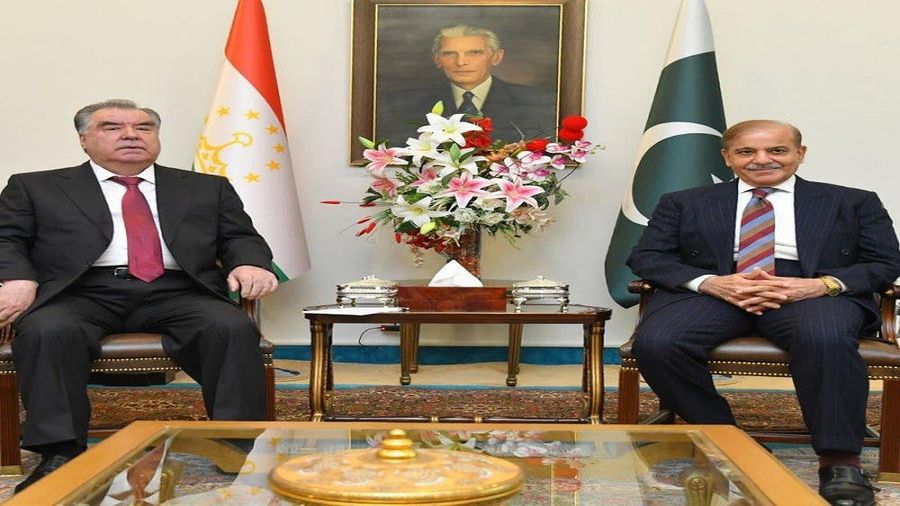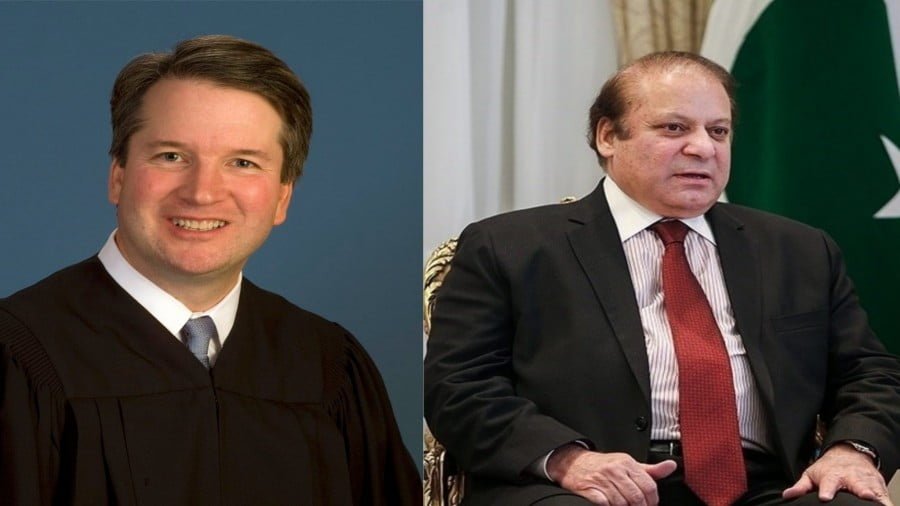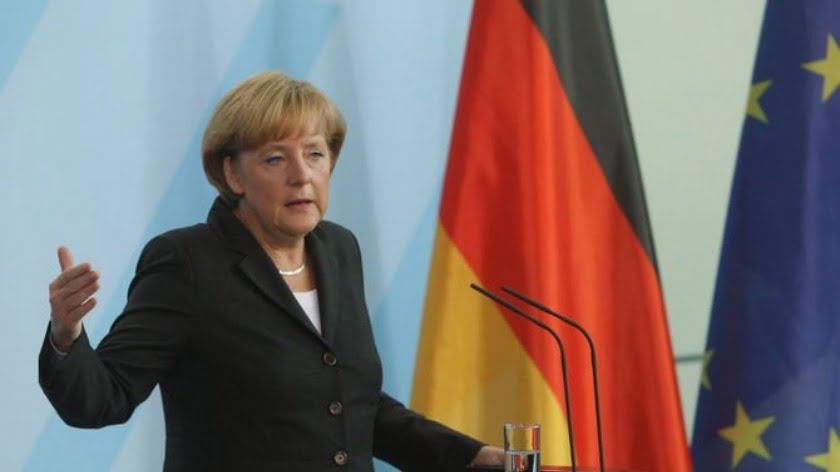Shared Threat Perceptions of the Taliban Catalyzed Strategic Pakistani-Tajik Cooperation
The continued leadership of the Taliban’s extremist faction poses unacceptable security risks for Pakistan and Tajikistan that impede their vision of comprehensively expanding their mutually beneficial cooperation via their shared Afghanistan neighbor. The public aspect of their newly declared strategic ties can never truly enter into effect so long as that clique remains in power and continues threatening their interests by sheltering the TTP and threatening ethnic Tajiks respectively.
Tajik President Rahmon’s successful visit to Pakistan last week saw both sides raise their ties to the level of strategic cooperation. This outcome was long-overdue seeing as how mutually beneficial it is. Tajikistan can obtain access to the Indian Ocean via the planned Pakistani-pioneered railway through Afghanistan while that South Asian state secures yet another reliable partner in Central Asia. The reason why this didn’t happen sooner is because they were previously on opposite sides in Afghanistan.
It’s no secret that while Pakistan supported the Taliban during the West’s two-decade-long occupation there, Tajikistan backed Kabul. After Afghanistan’s former rulers swept back into power, Tajikistan reportedly pivoted towards providing some degree of support for those of its co-ethnics who rebelled against them. Meanwhile, a dangerous security dilemma developed between the Taliban and Pakistan to the point where ties can presently be described as mutually antagonistic, if not outright hostile.
Islamabad’s displeasure with Kabul’s restored rulers is due to the latter’s patronage of the TTP, which the former rightly designated as terrorists. Whichever Taliban faction it is that’s currently calling the shots, and it’s difficult to know exactly who comprises this clique due to their traditional opacity, indisputably represents a threat both to Pakistan and Tajikistan’s objective national interests. Those two therefore have an unstated interest in eroding that aforesaid faction’s influence over Afghanistan.
Nevertheless, Pakistan and Tajikistan are incapable of doing so on their own, the first because the ruling Taliban clique distrusts those of its peers who are too closely connected to Islamabad and thus suspected of being its “agents of influence” while the second represents the secular Tajik minority that’s traditionally been at odds with that country’s pious Pashtun majority. Despite the challenges inherent in their respective approaches, their shared goal of “moderating” the Taliban can best be pursued jointly.
To explain, the international community is in agreement that this group must fulfill its promise to form a truly ethno-regionally inclusive government in order to obtain formal recognition. That’s precisely what Tajikistan has always wanted and which Pakistan is nowadays serious about having happen as well. With that in mind, they might attempt to pool their capabilities to eventually create a Pashtun-Tajik front intended to (hopefully peacefully) replace the Taliban’s extreme ruling faction.
The continued leadership of that group’s particular faction poses unacceptable security risks for Pakistan and Tajikistan that impede their vision of comprehensively expanding their mutually beneficial cooperation via their shared Afghanistan neighbor. The public aspect of their newly declared strategic ties can never truly enter into effect so long as that clique remains in power and continues threatening their interests by sheltering the TTP and threatening ethnic Tajiks respectively.
Had it not been for their shared threat perception of the Taliban, then the long-overdue strategic cooperation between Pakistan and Tajikistan might still not have been agreed to by their leaders. After all, Tajikistan would still regard Pakistan as a competitor by proxy via the latter’s support of the same Taliban that threatens its co-ethnics in the north, while Pakistan would regard Tajikistan in a similar sense due to its support of those same rebellious co-ethics against Islamabad’s local Taliban partners.
The specific dimensions of the newfound strategic cooperation between Pakistan and Tajikistan will remain to be seen when it comes to Afghanistan, but no observer should doubt that those two will attempt to move in the direction that was explained in this analysis, even if only cautiously at first. They still don’t trust one another, but then again, neither did Russia and Pakistan prior to their respective rapprochement half a decade ago that was also catalyzed by shared Afghan-emanating threats.
Back then, it was ISIS-K that brought those two Old Cold War-era rivals together, but now it’s the Taliban’s extreme ruling faction that’s bringing Pakistan and Tajikistan together. Comparing these two rapprochements, the first was extremely promising but is presently stalled due to early April’s US-orchestrated post-modern regime change against former Prime Minister Khan while the second will have less significant grand strategic consequences but nowadays appears much more likely.
In the event that Pakistani-Tajik strategic cooperation manifests itself in some tangible security-related way in Afghanistan, then this could lead to a shift in the regional balance of influence. Russia was recently tipped by the Taliban to play a key role in its geo-economic balancing act, shortly after which that Eurasian Great Power organized an informal Troika on Afghanistan alongside its shared Indian and Iranian strategic partners during the latest round of talks on that country in Moscow last month.
This diplomatic-strategic development wasn’t due to those three endorsing the extreme Taliban faction that currently rules Afghanistan, but simply out of their joint desire to make the best out of those circumstances that remain beyond their control (i.e. their inability to advance political reforms there). Be that as it was, the possibly incipient emergence of a Pakistani-Tajik axis aimed at more proactively encouraging political change in Afghanistan could disrupt the prior balance that had earlier set in.
To be clear, the unofficial Russian-Indian-Iranian Troika on Afghanistan also wishes that the Taliban would moderate its policies by finally forming a truly ethno-regionally inclusive government. Unlike Pakistan and Tajikistan, however, neither of those three faces the pressing security concerns from that group’s extremist ruling faction. This explains the difference between their respective approaches to managing Afghan-emanating threats at this particular point in time.
Pakistan and Tajikistan should proceed very cautiously when it comes to advancing their shared interests in more proactively encouraging political change in Afghanistan out of concern that moving too fast in this direction could inadvertently destabilize that country and give ISIS-K more room to rise. The Taliban’s extremist ruling faction is indisputably a threat to those two’s objective national interests, but it’s the proverbial “devil that they know” compared to the unknown one represented by ISIS-K.
For everything that the Taliban’s ruling extremist faction can be faulted for, and there’s plenty that can be added to that ever-growing list, they’re at least doing their utmost to counter ISIS-K and are therefore the most effective fighting force in the country against that terrorist group. If their regime was destabilized as a result of the comparatively more moderate Pashtun-Tajik front that Islamabad and Dushanbe might jointly assemble ultimately resorting to violence, then ISIS-K could easily benefit.
It’s in the interests of the region to collectively manage those threats that are emanating from Afghanistan under the rule of the Taliban’s extremist faction than for some stakeholders like Pakistan and Tajikistan to unilaterally attempt to change the delicate status quo in that historically unstable country. Any moves in the second-mentioned direction can advance the scenario of ISIS-K exploiting the resultant chaos in order to rapidly expand there at a similar pace as it did in West Asia from 2014-2015.
That said, it’s understandable why Pakistan and Tajikistan might have finally gotten fed up with the hitherto largely ineffective collective efforts to manage those Afghan-emanating threats to their security coming from the Taliban’s ruling extremist faction and thus decided to jointly take action in pursuit of their shared interests. Once again, it’ll remain to be seen whether this happens and what form it could take if it does, but their newly strategic cooperation makes this a credible scenario given the context.







